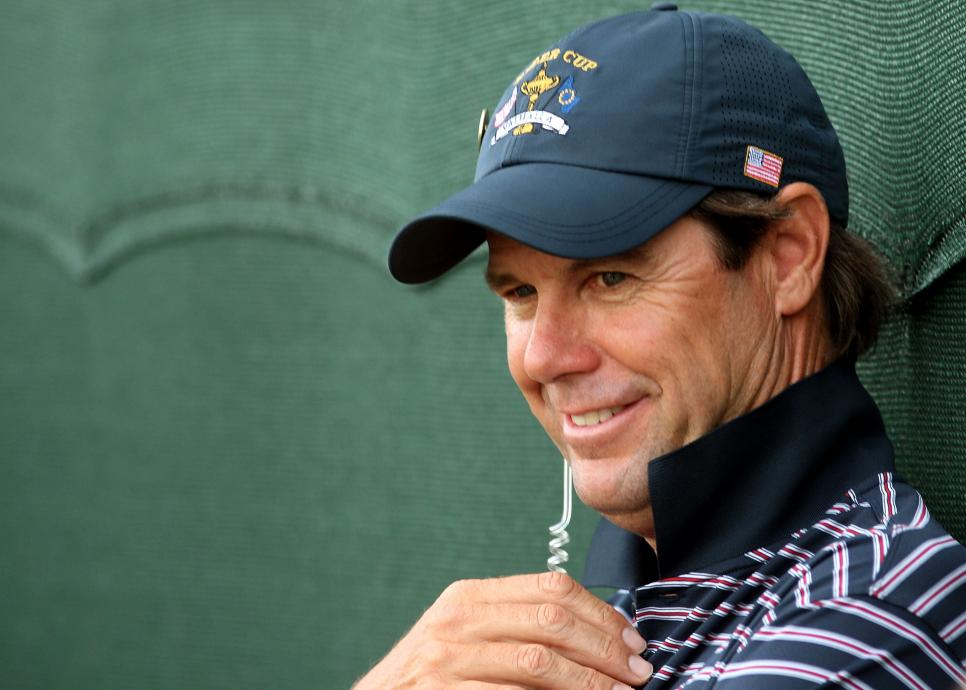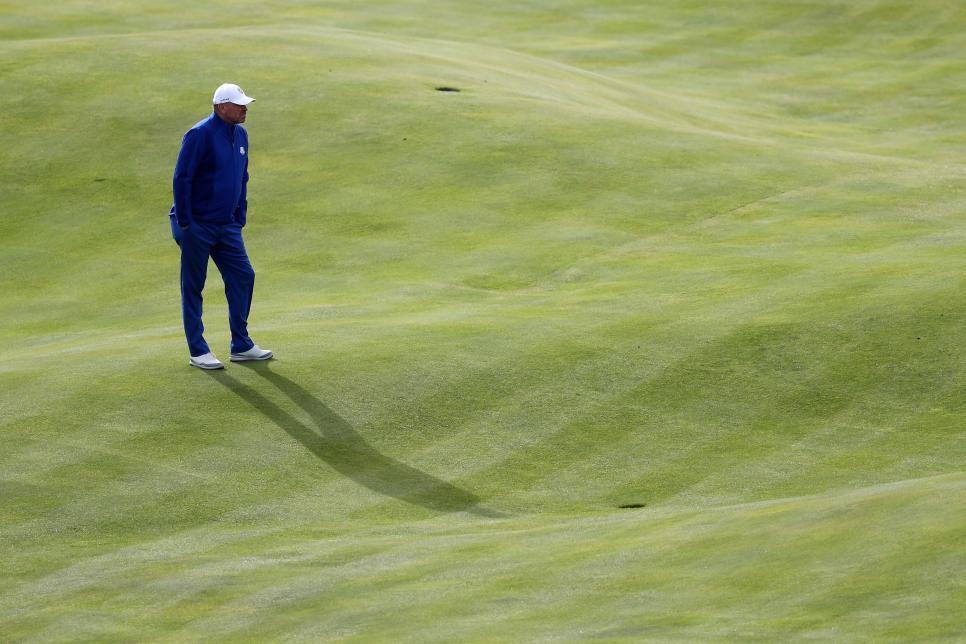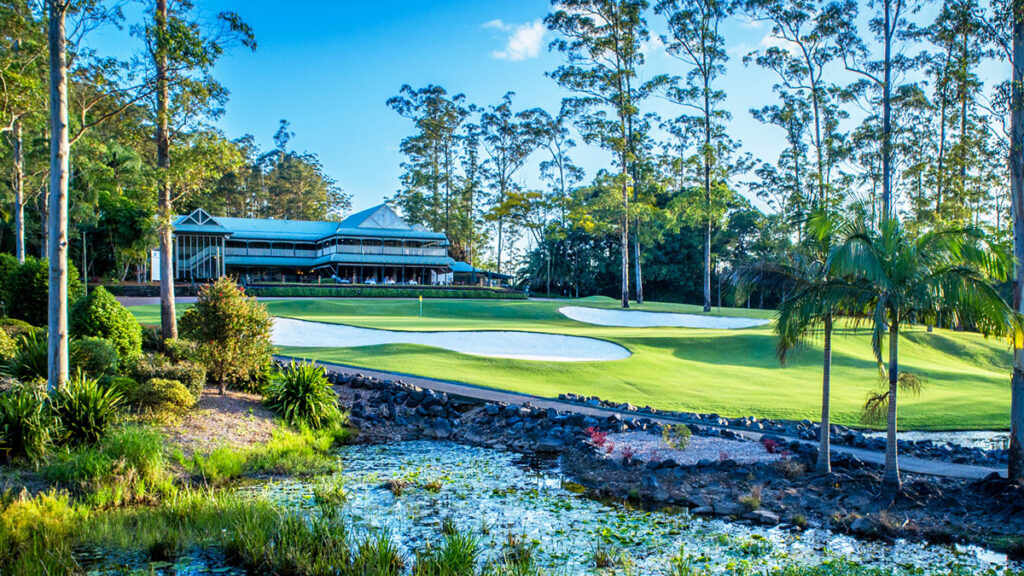Thirteen years ago, in the months leading up to the 2008 Ryder Cup, Paul Azinger picked up the phone to call someone whose help he coveted. It wasn’t a player, or a caddie, or a swing coach. It wasn’t a celebrity guest speaker, either. It was Mark Wilson, the course superintendent at Valhalla Golf Club.
“I called him up and I said, ‘Mark, I consider you an integral part of our chances to win the Cup,’” Azinger recalls. “I told him I’m going to have a bunch of guys who bomb it and a bunch of pea-shooters who hit it right down the middle, and I don’t know what to do with that rough.”
Wilson was overjoyed to hear from the captain and rather eager to help.
“He said, ‘If you got bombers, I’ll keep it short. And if you got pea-shooters, I’ll fertilise the hell out of it, and in three weeks it’ll be six inches long!”
The duo devised a strategy. Azinger determined that he had six or seven players who could fly the ball 300-plus yards in the air. So they’d set up tees 300 yards away from the back edge of bunkers, allowing his bombers to carry them without added effort. They’d keep the rough a healthy length short of the bunkers but make sure there was essentially no rough on the other side of them. Azinger wanted to, in technical terms, let his big dogs eat.
“I had two tree limbs cut down strictly because of J.B. Holmes,” he recalls. The captain and the superintendent grew so close throughout that Ryder Cup cycle – which the underdog Americans won 16½-10½ – that Wilson named his dog Zinger.
“Zinger’s still kickin’, too! I talked to Mark Wilson the other day.”Some might label such blatant course manipulations as bush-league, but Azinger wasn’t breaking any rules. He had asked PGA of America setup chief Kerry Haigh if he could control the setup, and Haigh didn’t say no. That gave Azinger the green light to weaponise the golf course in his team’s favour.
Therein lies the Ryder Cup’s dirty little secret. Apart from his picks and choosing the pairings and lineup order, course setup is a home captain’s most potent lever to influence the matches. American sides have historically held edges in length off the tee and prefer faster greens, so US courses have catered to those attributes – as Whistling Straits will this week. This is no surprise, given their games have been moulded to feast on beefy PGA Tour setups. European teams – and again, we’re speaking generally here – typically have straighter hitters who are used to slower green speeds.
And while Azinger took it to the extreme in 2008, there is a long history of Ryder Cup captains on both sides of the Atlantic amplifying their home-field advantage via the golf course.
The 1997 Ryder Cup was held in Spain at Valderrama Golf Club, a tight and finicky track that took drivers out of the Americans’ hands. Europe won a nail-biter, 14½-13½. At The Belfry in 2002, European captain Sam Torrance made sure the rough was brutal at 285 yards, just beyond the fairway bunkers – the inverse of Azinger’s move. Europe won, 15½-12½. Ian Woosnam followed suit in 2006 at the K Club in Ireland. Europe equalled the widest margin of victory in Ryder Cup history with an 18½-9½ shellacking of a team that included the top three players in the world.
Next were Azinger’s antics at Valhalla, which came dangerously close to violating a stipulation in the mutually approved “captain’s agreement” – it states that the course is under the home captain’s control only until Monday of tournament week. After that, daily decisions regarding course setup all are to be handled by the match committee, which is made up of representatives from the European Tour and the PGA of America.

“We’ve agreed to try to avoid doing so much course manipulation [during the event], because we were getting some really sneaky stuff on hole locations” says Davis Love III, who played on six Ryder Cup teams, captained the 2012 and 2016 side and will be an assistant at Whistling Straits. Even if there was no sneaky stuff, Love made his preferences known.
“In 2016 at Hazeltine, I told Kerry that you’ve set this up before and to stick with it. I didn’t want rough if at all possible. We wanted to take luck out of it and have a whole bunch of birdies, because birdies get the crowd into it. Even if we tie holes with birdies, that’ll get the crowd fired up.”
The routing was also changed, with traditional holes 1-4 and 14-18 functioning as the front nine and 10-13 and 5-9 comprising the back. Americans won comfortably during that birdie-filled week – exactly as Love envisioned and to the chagrin of the European side.
“I thought the setup was incredibly weak,” Justin Rose said of Hazeltine. “I just thought it was very much a pro-am in terms of pin placements. They were all in the middle of the green. I didn’t understand that, to be honest, with world-class players, 12 world-class players here and 12 other world-class players from the US, and we wanted to showcase our skills.”
Rose was much more complimentary of the setup at the most recent Ryder Cup in 2018, which made plainly obvious once more just how big an impact a venue can have. With his captain’s picks, Jim Furyk selected four players in terrific form: Tiger Woods, Phil Mickelson, Tony Finau and Bryson DeChambeau. But that form came on American-style courses; Le Golf National, outside Paris, presented a different challenge entirely. The fairways were narrow, the rough punishing, the greens slow – at least by American standards. Furyk was criticised for using his picks to select four guys who ranked 93rd or worse in driving accuracy on the PGA Tour.
“Thomas [Bjorn, Europe’s captain] thickened the rough a little bit, but the fairway widths were no different than they were for the French Open – and we’d played 20-odd French Opens around that golf course,” says Paul McGinley, captain of the victorious 2014 European side at Gleneagles. “And that was the really surprising thing for us, that Justin Thomas was the only one who came over to see it [in the 2018 French Open]. To see the golf course, to see what it was like. Even with no rough, it’s not a golf course that you wrestle to his knees and whip it over corners. It’s a golf course that’s positional. It always is.”

Knowing this, Bjorn picked four fairway-and-green finders with his captain’s selections for Europe in Sergio Garcia, Ian Poulter, Paul Casey and Henrik Stenson. The American captain’s picks went 2-9 that week (though Thomas, it should be noted, went 4-1 after getting his early look). The European captain’s picks went 9-4-1.
Steve Stricker, captain of this year’s US squad, seems to have learned the lesson. In explaining his rationale behind his six captain’s picks – Daniel Berger, Tony Finau, Harris English, Xander Schauffele, Scottie Scheffler and Jordan Spieth – he repeatedly stressed the importance of driving distance. As is the duty of the modern captain, he’d consulted with his statistical experts and determined that length off the tee was vitally important to cracking Whistling Straits. It worked in favour of Scheffler and against candidates such as Kevin Na, who may have gotten the call had the venue been a European one.
“Looking at what Stricker’s done with his picks, I think there’s no doubt that there’s a change there in the American modus operandi from what they did before,” McGinley says. “The takeaways they’ll have gotten from Paris is that we were much better prepared for that examination paper. Henrik Stenson is a greens-in-regulation guy. Sergio Garcia is a greens-in-regulation guy. Paul Casey, the same. They were picked for that reason. Thomas [Bjorn] knew what he was doing. He knew that golf course inside out.
“We set our pairings up and our teams up according to what the exam was for that specific Ryder Cup. I know Jim Furyk is part of the consultation panel that’s been going on there, and they all would have learned from what happened in Paris. It’s quite clear Stricker made his picks with that in mind.”
Only Whistling Straits isn’t a Valhalla or a Hazeltine National or a Bethpage or a Bellerive. It’s not a point-A to point-B bomber’s paradise that hands out birdies like candy. It’s a vexing test of golf, devoid of trees and situated on the shores of Lake Michigan. If you turn off Location Services and squint your eyes, you’d swear it’s an Irish links. Recent history gives a good indication of what is in store. The course will play long and the rough will play short. The pins will be on the easy side. All that is more or less within Stricker’s control. But the weather possibilities of late September in Wisconsin are not – and that gives the underdog Europeans hope.

“If it’s a darts-fest, we have got no chance,” McGinley says. “I mean that, we have no chance. If there’s a 30mph wind and squally showers, as we call it in Ireland, and it becomes a bit of a dogfight, I’m much more liking our chances in that case. You look at the performances of Patrick Cantlay and Bryson DeChambeau in the darts-fest that the [FedEx Cup] Playoffs were. Every one of those events was a darts fest of soft golf courses with soft greens and virtually no wind.
“You look at how much the Americans revel in those conditions – warm, humid, ball flying miles. The Americans eat those conditions up. The golf course could certainly give us a chance. I’ll be watching that weather forecast very, very closely.”
TOP/MAIN PHOTO: Montana Pritchard/PGA of America




